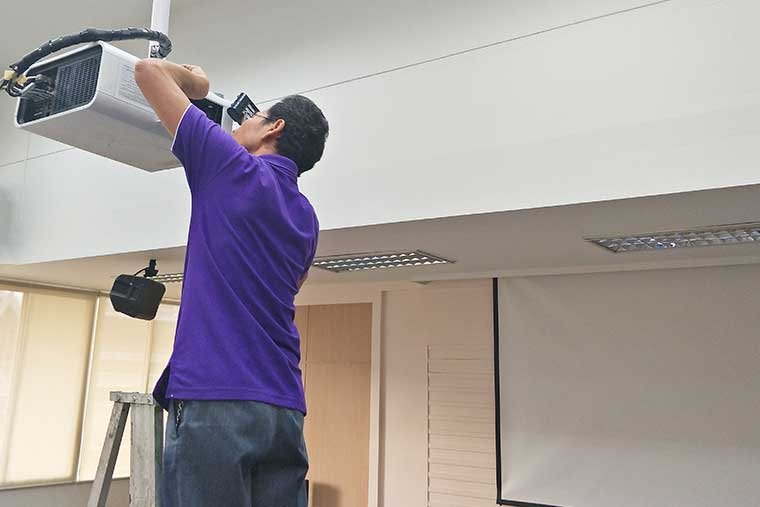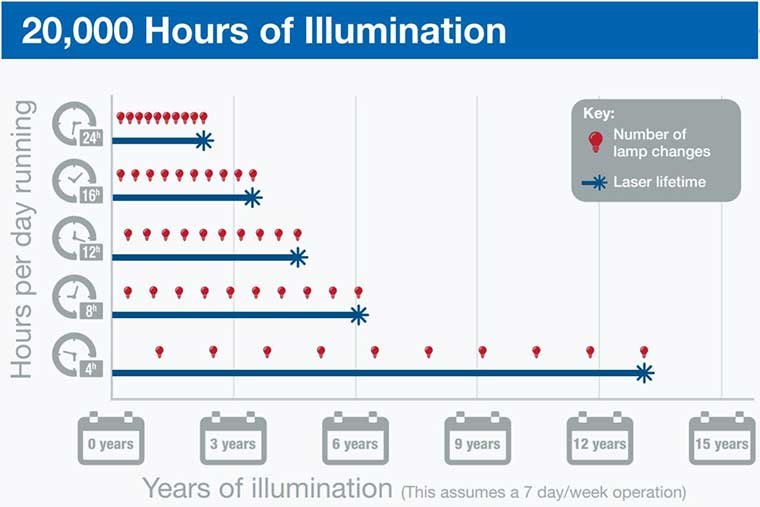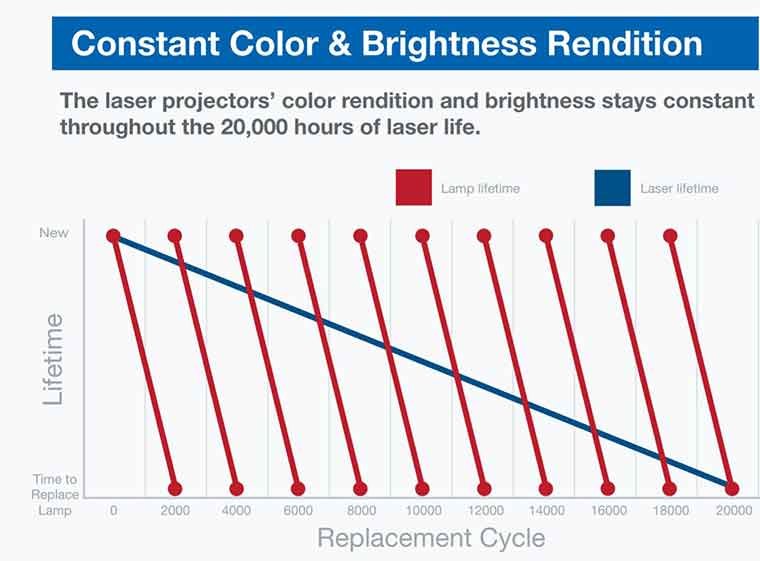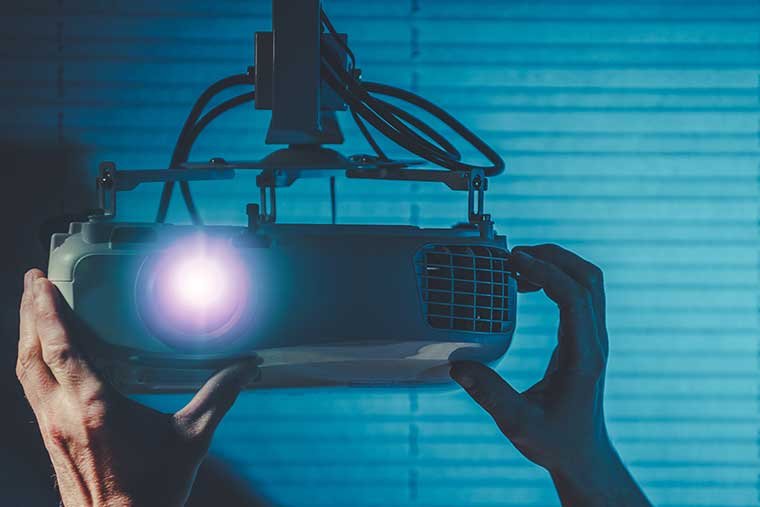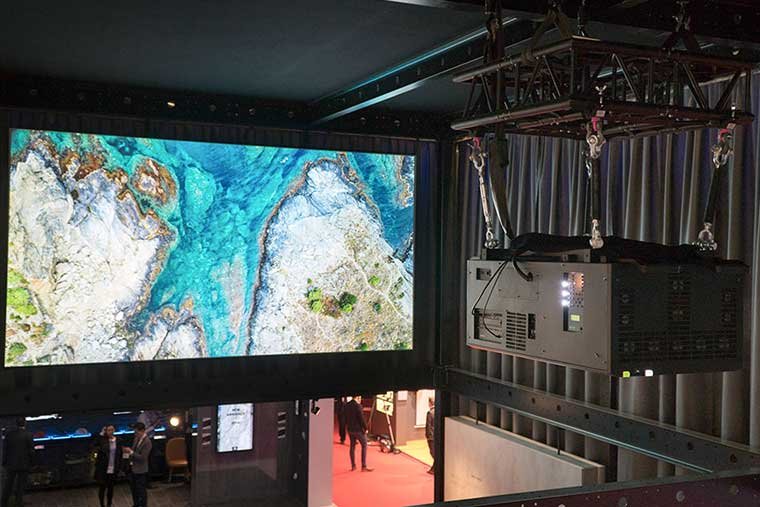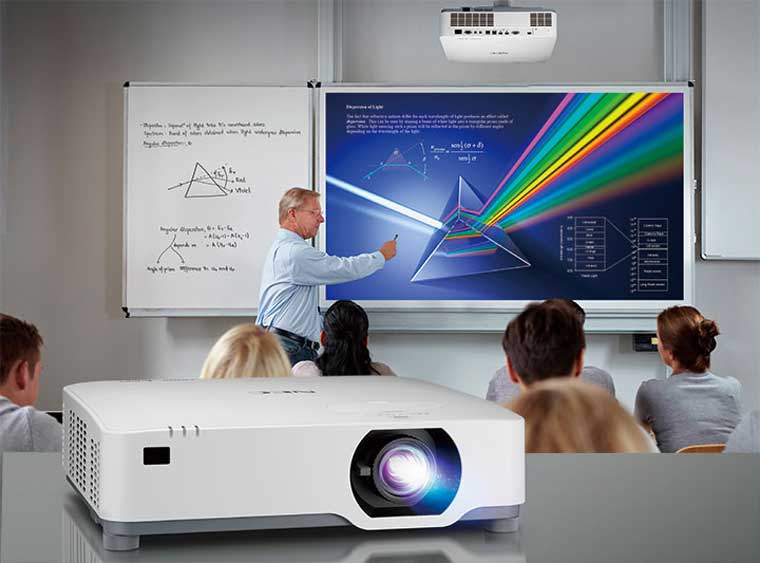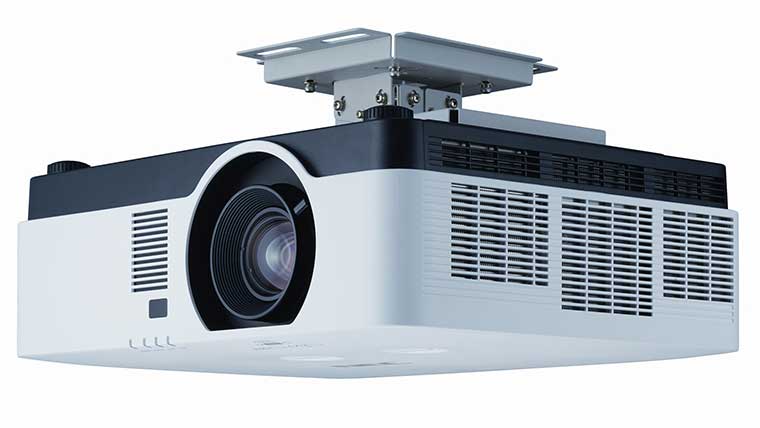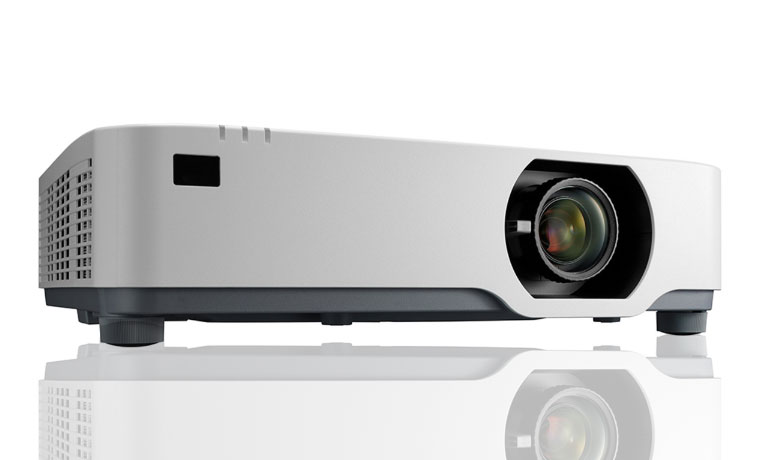This Month’s Feature from Sharp NEC – Leaders in Commercial Projection
We’ve all been there—you’re in a big meeting, and no one knows how to turn on the projector. When it finally works, your company’s logo looks totally off-color. Add in some fan noise and a dim picture, and it’s easy to see why projectors used to get a bad reputation.
But things have changed. Today’s projectors are better in almost every way. Whether you’re using them in a business, classroom, or house of worship, modern projectors now deliver the size, clarity, and convenience you need—without the old headaches.
In this article, we’ll help put those outdated projector myths to rest. But first, let’s look at what made projectors frustrating in the past. Understanding these problems makes it easier to appreciate just how far projectors have come.
We’ll break down seven common pain points that used to cause trouble with projector installations:
Maintenance
Longevity
Installation Challenges
Image Quality
Noise
Connectivity
Control
These aren’t just hardware problems—they also reflect how technology and installation practices have evolved. We’ll show how today’s projectors are smarter, more reliable, and easier to work with than ever before.
Maintenance
Maintaining projectors used to be a hassle—let’s be honest.
But with today’s modern technology, IT teams and installers have much less to worry about. Most bright commercial projectors no longer rely on traditional bulbs.
Thanks to laser-based projection and sealed optical systems, projectors now run longer and require far less maintenance. In fact, laser projectors can last up to 20,000 hours before needing any attention—compared to only about 2,000 hours with old bulb-based models.
That’s a huge improvement in both performance and peace of mind.
Sharp NEC’s P and PA series projectors use a sealed LCD cooling system to keep dust out. This is important because less dust means less maintenance. The sealed optical chamber also protects the lenses from dust, keeping the image sharp and bright over time.
These projectors also have a self-contained cooling system that pulls in less outside air to stay cool. Since laser projectors produce less heat than traditional ones, they don’t need as much airflow, which means fewer filter changes and even less maintenance.
Less maintenance is a big plus not just for IT teams but also for teachers, curators, or anyone who just wants a reliable projector. If you need the best image quality for a long time, laser projectors are hard to beat.
Longevity
Let’s talk about how long projectors last — the second pain point. One key factor is picture brightness. Many people prefer flat panel screens because they keep their picture quality steady for a long time.
In the past, projectors would get dimmer as they aged. But today’s laser-based projectors, like flat panels, can deliver bright, colorful images for many years. So if you buy a laser projector that can produce 5,000 lumens, you can trust it will stay bright and clear for a long time.
Thanks to laser technology, projectors now keep their brightness much longer than before.
Installation
Installing a projector should be simple, not stressful. Here, we’ll look at common installation challenges and the new technologies that help solve them. Understanding the obstacles ahead is the first step to a smooth install.
In any space—whether a boardroom or classroom—there can be challenges like HVAC systems, windows, or beams that make installing projectors tricky.
This is especially true when upgrading or retrofitting projectors. No one wants to move an existing projector mount just to fit a new projector. Features like horizontal and vertical lens shift and a wide zoom range help you perfectly align the image no matter where the projector is mounted. Higher-end projectors also offer interchangeable lenses and motorized lens adjustments for even more flexibility during installation.
Another common issue is using the remote control when the projector is mounted high up or close to another projector. It can be hard to adjust settings this way. To solve this, brands like Sharp NEC offer PC control, so you can adjust one or more projectors over a network from your computer, making installation easier and faster.
Finally, another installation challenge is running long cables. For big commercial projects, long cable runs can cause video quality issues and create clutter. Plus, running multiple cables for video, control, and power can get expensive.
That’s where HDBaseT helps. It uses just one CAT5e or CAT6 cable—up to 100 meters (328 feet) long—to carry video, control, and power signals. This cuts down on cable clutter, lowers installation costs, and makes setup much easier.
Image Quality
No matter how great a projector looks at first, it’s what happens after weeks or months that really matters. Thanks to laser-based projection, longevity is no longer a big worry. Laser projectors, like those from Sharp NEC, keep their brightness and image quality for up to 20,000 hours—many years—while older bulb-based projectors usually start to dim after about a year.
But having a high brightness rating, like 5,000 or 10,000 lumens, doesn’t always mean the projector will look bright and accurate in real life. There’s a long-standing trade-off between brightness and color accuracy. To get better colors, many projectors reduce brightness. That means a projector might only show about half its rated brightness if you want good color—making it harder to see in a bright room.
Not all projectors handle this trade-off well. Some sacrifice picture quality just to claim a higher brightness number. So that 5,000-lumen projector you put in a boardroom might only give you half that brightness with accurate colors. It’s frustrating to have to buy a 10,000-lumen projector just to get a true 5,000-lumen image.
Sharp NEC is improving this balance. Their laser projectors, like the NEC P506QL, deliver bright, colorful images that stay usable for many hours—even in their brightest modes. To learn more, check out our review of the NEC P506QL projector.
Let’s think about a graphic design school. Color accuracy and consistency are super important here. So, you want a projector that not only shows bright images but keeps those colors true over time. If you can’t trust the projector to do that, it’s a big problem.
Besides great image quality that lasts, projectors also let you create much bigger pictures than flat panels. This is perfect for group work and makes it easier for everyone to see, even at the back of a big room.
Noise
Some people find the hum of a projector soothing, but most of us find it distracting—especially when you need to focus or listen carefully. Imagine being a museum guide having to speak loudly over a noisy projector—not fun.
Older projectors with bulbs got really hot, so they needed fans to cool them down—and those fans made a lot of noise.
Even today, noise is a common complaint, even with newer laser projectors. Installers often say some projectors are still too loud for quiet spaces.
That’s where Sharp NEC’s P525UL projector shines. It runs very quietly, making it great for places where low noise is important.
Connectivity
Today, getting images to projectors is more complex than it used to be. In the past, you just plugged a source into the projector and the image showed up.
Now, there are many ways to connect devices, and AV over IP (sending video over networks) is becoming very popular. You need to think about questions like: What devices are you connecting? Are there both Apple and Windows users? Do you want to show multiple screens at the same time?
There’s a lot of talk about the future of projector connections, but the most important thing is to choose the right setup that fits your specific needs.
Wireless or Wired?
Wireless projectors are popular, but they’re not always the best choice. For example, in a classroom with tech-savvy students, wireless might be tricky to manage. On the other hand, using a wired LAN connection can make life easier for IT staff, letting them access and fix projectors remotely without having to walk across campus.
To keep things flexible, Sharp NEC offers classroom projectors with wireless options plus a feature called MultiPresenter. This lets many users connect and share content easily, controlled precisely from one place. It does need some setup and software, but it’s great for environments where many different devices and presenters are involved.
Control Made Easy
Control is a big deal with projectors—even something as simple as turning them on. Older lamp-based projectors often take time to start up, which can cause confusion. Imagine a professor pressing the button, seeing no picture right away, and pressing it again multiple times. This wastes time, frustrates everyone, and disrupts the class.
Laser and LED projectors fix this problem because they turn on quickly, showing an image within seconds—no waiting, no guessing if it’s working.
Also, networked projectors let IT staff manage and troubleshoot remotely, saving trips to hard-to-reach rooms. When projectors are easy to control and use, they get used more often, which keeps everyone happy.
In Conclusion
Laser and LED projectors bring huge benefits for businesses, schools, and more. With brighter images, quieter operation, easier installation, longer life, and bigger screens, modern projectors are a smart choice for almost any setup. They require less maintenance and offer excellent image quality and flexibility, making them the best option for today’s commercial projects.
